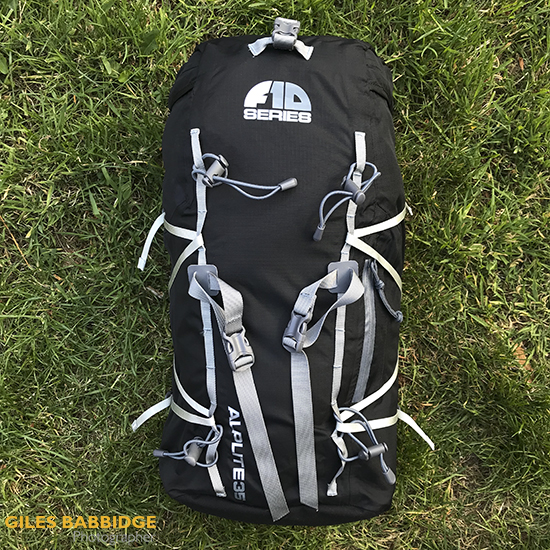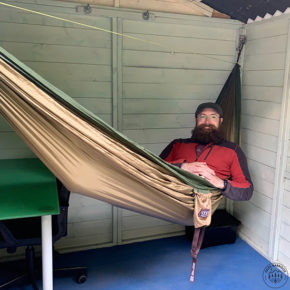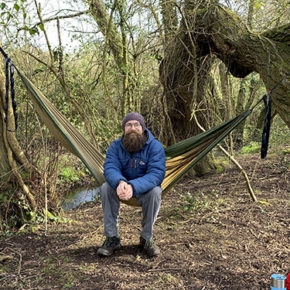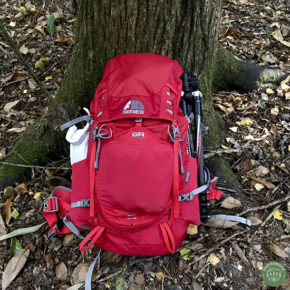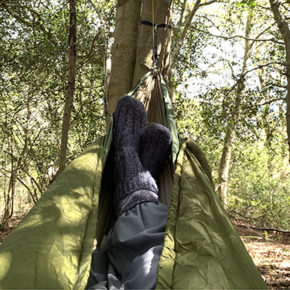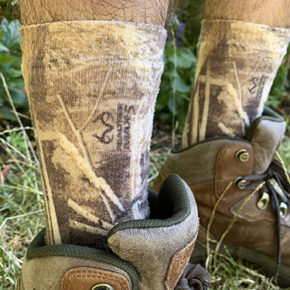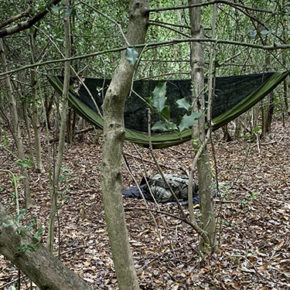Test/Review: Vango Force Ten Alplite 35 Rucksack
In many ways, this Test/Review can be seen as a comparison write-up alongside that of the GR 35:40 Rucksack, which I previously wrote about here.
As a pack, it’s something a little different to what you’re used to seeing me with – in its appearance, functionality and list of features – and was designed for “fast and light trips”, especially in alpine regions.
I’ve been using it on lower-level terrain, for overnighters and day excursions. For reference, I’ve mostly carried lightweight kit, too – a single camera/lens setup, tarp shelter/hammock kit, clothing, cook kit and provisions.
Simply does it
The first thing that you’ll notice, compared to the GR 35:40, is that the overall construction – whilst reassuringly strong – is that much lighter at just 900g vs 1.44kg.
For those interested to know specifically, the material used is Excel® 210D Double Line Ripstop Nylon.
So, already scoring points for anyone who likes to keep an eye on the total weight of what you carry.
It’s not difficult to see how this saving has been made, either. Where the former has mesh external pockets, considerably more padding on the straps, adjustable back support etc, the Alplite… well… doesn’t!
And it’s this simplicity that I love about it.
That’s not to say it isn’t a technical pack, by any means. On the contrary, there are some great features…
A selective overview
For me, here are the highlights:
If you’re a fan of a single-compartment bag, you’re in luck – because that’s what’s on offer with the Alplite 35. No fuss, just one main chamber reached by a tough 2-way zip; this is located just above the top of the shoulder straps around the back and undoes almost all the way, to reveal near-unrestricted access.
There’s a decent overlying protective storm flap, too, and a single internal pocket which sits against the back panel.
As an aside, I really like the length and gauge of the cord attached to the zips – they make opening really easy with cold, wet hands or when wearing gloves.
You get a decent-sized external pocket on the lid, too, which contains a clip for securing items such as keys and small accessories. Alongside this you’ll also find a webbing grab strap.
One stand-out feature is the rope strap which connects over the lid. I’ve found this really useful when oversized or additional items were needed. In the picture at the bottom of this post, for example, you’ll see that on one occasion I decided to attach my sleeping bag in this way, thus freeing up space inside.
The moulded EVA back panel is equally simple. With a small degree of padding, it’s shaped to allow ventilation. Purely by design, I’ve found this isn’t quite as effective as the GR 35:40’s panel.
That said, the design of both packs is such that they sit right up against the back – so some dampness from sweating is to be expected. As I said previously, though, I’ve never felt what you’d call ‘uncomfortable’ as a result.
Although the shoulder straps of the Alplite are relatively thin, I’ve found them to be perfectly up to the job, with no pain or soreness when under load. The chest strap does what it’s supposed to (note, no whistle buckle on this model), and the waist belt is simply two detachable lengths of webbing joined together by a buckle.
I mentioned that there are no side pockets… instead, the Alplite is fitted with compression straps on each side. These weave their way through a series of daisy chain accessory loops, giving plenty of customisation to suit the kit being secured. As a photographer, I’ve found them handy for securing tripods, but lightweight tents and poles are equally at home.
For those of you intending to carry skis – you’re well catered for, thanks to a couple of buckled straps which sit centrally either side of the pack. There are also twos sets of elastic cords a little way above and below, designed to secure ice axes. I’ve never used them for this – but again, they’re well suited to attaching walking poles and tripods.
One final feature worth mentioning is the small water resistant zip which sits on the front and allows quick access to items lower down in the pack.
In conclusion, then…
Deceptively durable and subtle in design, with a list of practical features that just make sense, this is a model in the Force Ten range that should not be overlooked. It even comes with a set of longer elastic cords for you to attach a sleeping mat to the front.
Sometimes, all you want is a no-fuss, dependable rucksack that is simply going to do the job it was designed for. The Alplite 35 is one such bag.
—
Further information about the Force Ten range can be found here.
For behind-the-scenes pictures of this rucksack in action, take a look at my Instagram feed.
Category: Camping, Location photography, Microadventure, Test/Review

